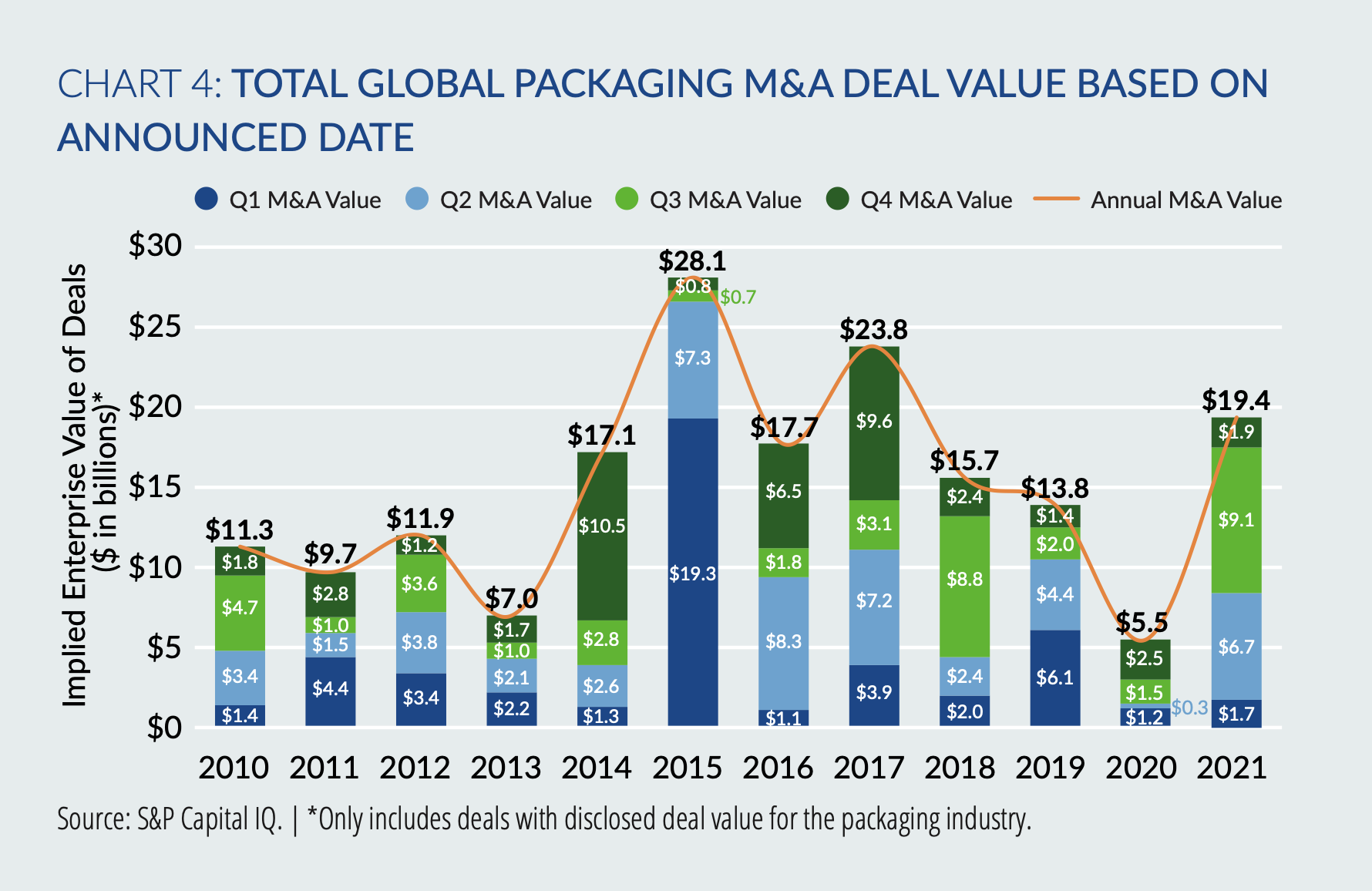CC Blog: Global packaging M&As recover in 2021 with $19.4 billion in deals
Edited by Mark A. Spaulding

The packaging sector experienced very strong transaction
volumes in 2021, according to a new report from Chicago-based Mesirow Financial. Key M&A
drivers were robust demand aided by pandemic tailwinds,
strong valuations and an abundance of capital among strategic
and financial buyers.
Packaging companies will continue to
experience elevated M&A activity in 2022, especially as
consumer e-commerce behaviors and demand for sustainable
packaging drive further values within the sector, and as
strategic and financial buyers leverage their capital access to
pursue accretive acquisitions, the study says.
M&A activity in the packaging sector started strong in Q1 2021, surpassing deal
values from Q1 & Q2 2020 combined, and grew rapidly in Q2 2021. In Q3 & Q4 2021, M&A activity grew to yield the highest values
in 2021 compared to the past three years (see bar chart above). M&A activity is anticipated
to remain strong in 2022 for the following reasons:
-
With COVID-19 continuing to impact societies and economies globally, the
packaging sector will remain a primary beneficiary, especially as changes in
consumer lifestyle and shopping patterns. See my post, “How COVID-19 Changed Packaging Forever,” to learn how COVID is transforming
the packaging industry and how producers can stay ahead of the trends.
-
Niche companies offering specialized packaging solutions are well-positioned
to capture accelerating market demand.
-
Financial buyers are using "buy-and-build" strategies to establish industry
portfolios with abundance of capital (over $1.9 trillion of “dry powder”).
-
Strategic buyers are looking for acquisitions to obtain growth, scale,
diversification and synergies.
-
Pricing and leverage levels for debt capital remain favorable.
Private equity continues to be a very
active M&A participant in the packaging
sector, as many packaging subsectors
exhibit:
-
Above-average demand growth
rates, with tailwinds provided by
consumer and e-commerce demands.
-
Defensive demand characteristics,
especially during periods of
economic downturns.
-
Meaningful presence in attractive
end markets, including healthcare
and food and beverage.
-
Attractive margins.
-
Relatively low margin volatility as
packaging companies typically pass
through raw-material cost changes.
-
Low capital expenditure
requirements and high free cash-flow
generation.
-
High degree of fragmentation
resulting in numerous opportunities
for consolidation and growth.
There have been numerous successful
examples of private-equity firms making
an initial acquisition, establishing a
platform company and subsequently
making add-on acquisitions. These
additions increase scale, enhance
manufacturing capabilities and product
offerings, expand geographic presence
and improve cost structure, resulting in
higher valuation multiples.